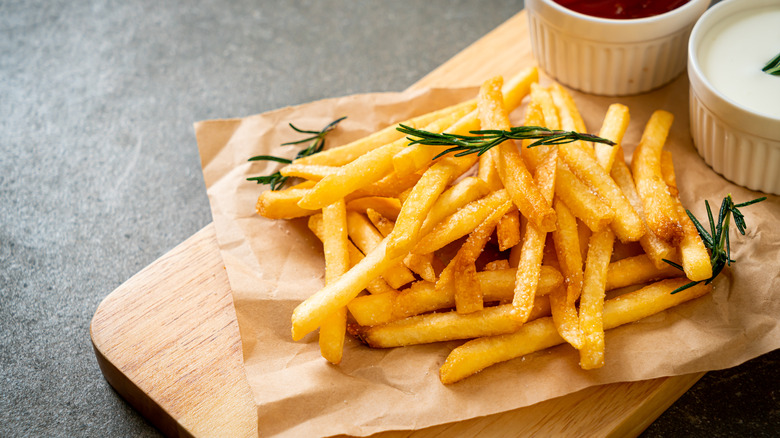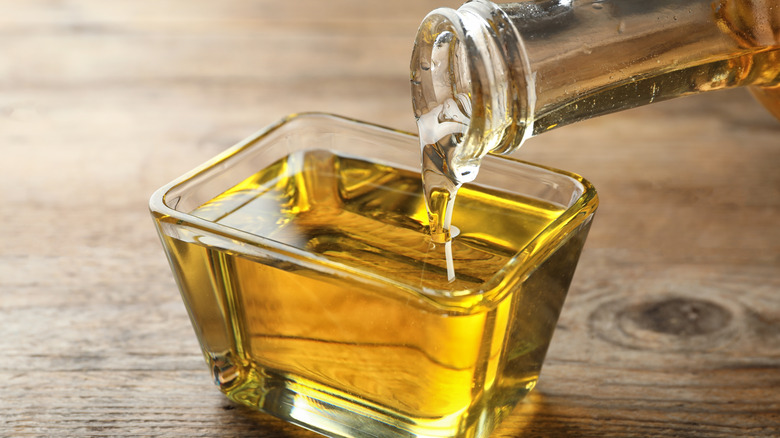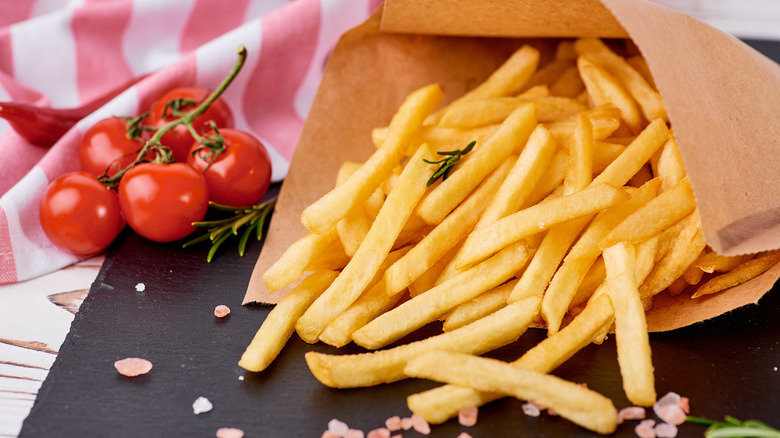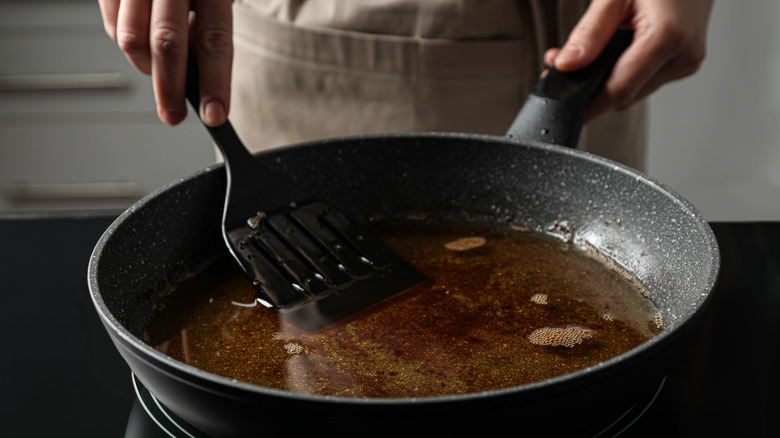The Only Type Of Oil You Should Use For Homemade French Fries
Making the best homemade French fries can be tricky. Some may have already tried several at-home hacks for getting amazingly crunchy French fries to no avail. But at the end of the day, it has a lot to do with choosing the right kind of oil to cook them in and properly frying them. According to Ree Drummond, that means frying fresh potatoes twice to get the perfect texture with a crispy crunch (via Food Network).
But if you're using frozen French fries, it's actually a bit easier and only requires one time in the fryer. This is because frozen fries have been par-cooked, so you don't have to worry about cooking them through. It's more so a matter of heating them up and getting a crunchy exterior. The only risk you run is making sure the fries don't have freezer burn or ice on them, which could cause the oil to spatter far and wide. However, you'll still need to opt for one of the best oils for frying French fries to ensure they turn out just right.
Use a neutral oil for French fries
There are three primary qualities to consider when selecting an oil for frying your French fries at home. The oil needs to be capable of reaching a high heat without going above its smoke point. The best oil should also be rather neutral, so it does not flavor the fries as they cook. It's important to consider the cost of the oil before you buy it too.
For example, peanut oil is excellent for frying French fries — which is likely why Chick-fil-A uses so much of it (via The Chicken Wire). After all, the chain is the "single largest buyer of U.S. peanut oil." It seems Chick-fil-A springs for this specific type of oil because it makes their fries taste great, but the oil also retains some of its health benefits since it can reach a high temperature of 450 degrees. But it is also on the expensive side, which is why canola oil is another great option. It checks all of the boxes without breaking the bank.
Consider these alternative oils too
According to Kitchen Appliance HQ, McDonald's uses soybean oil among other types of oil, so you might consider using it instead too. However, refined sunflower or refined corn oils are also good options. All of these oils are far less expensive than peanut oil, but are still capable of reaching a high enough temperature for frying. These oils are also neutral in flavor, so they won't leave behind a residual flavor in the French fries themselves. Taste of Home recommends safflower oil and rice bran oil for deep frying too.
No matter what kind of oil you opt for, there's one tip that you really should keep in mind. Overcrowding the fryer can cause the food to end up tasting soggy. That's because when too much food is placed in a vat of hot oil, it lowers the temperature. According to Serious Eats, when the temperature is lower, less moisture is driven out of the fries. That means there's a combination of water and oil in the fries making it seem greasy. So, be patient and don't put too many fries into the oil at once.
What to do with leftover oil
If you cannot find other oils such as safflower or soybean and prefer to skip canola in favor of peanut oil, it can be used in a cost-effective way. Peanut oil is the favorite pick for many people, but it doesn't make the cost any less difficult to swallow for a single batch of French fries. Fortunately, J. Kenji López-Alt explained how you can get the most out of your peanut oil in a post on Serious Eats.
According to López-Alt, you can reuse oil as many times as you'd like before changing it out. In fact, you can save old oil and add some of it into a new batch to improve how efficiently it will fry. However, once frying oil becomes dark and dirty looking with an off-putting smell, it's time to change it out. Unfortunately, this happens fast at home because food that falls to the bottom of the pan can burn more quickly and easily change the color, smell, and flavor of the oil faster. So, you need to be very careful to fry quickly and avoid letting food fall to the bottom of the pot if you'd like to reuse pricier oil for frying.



